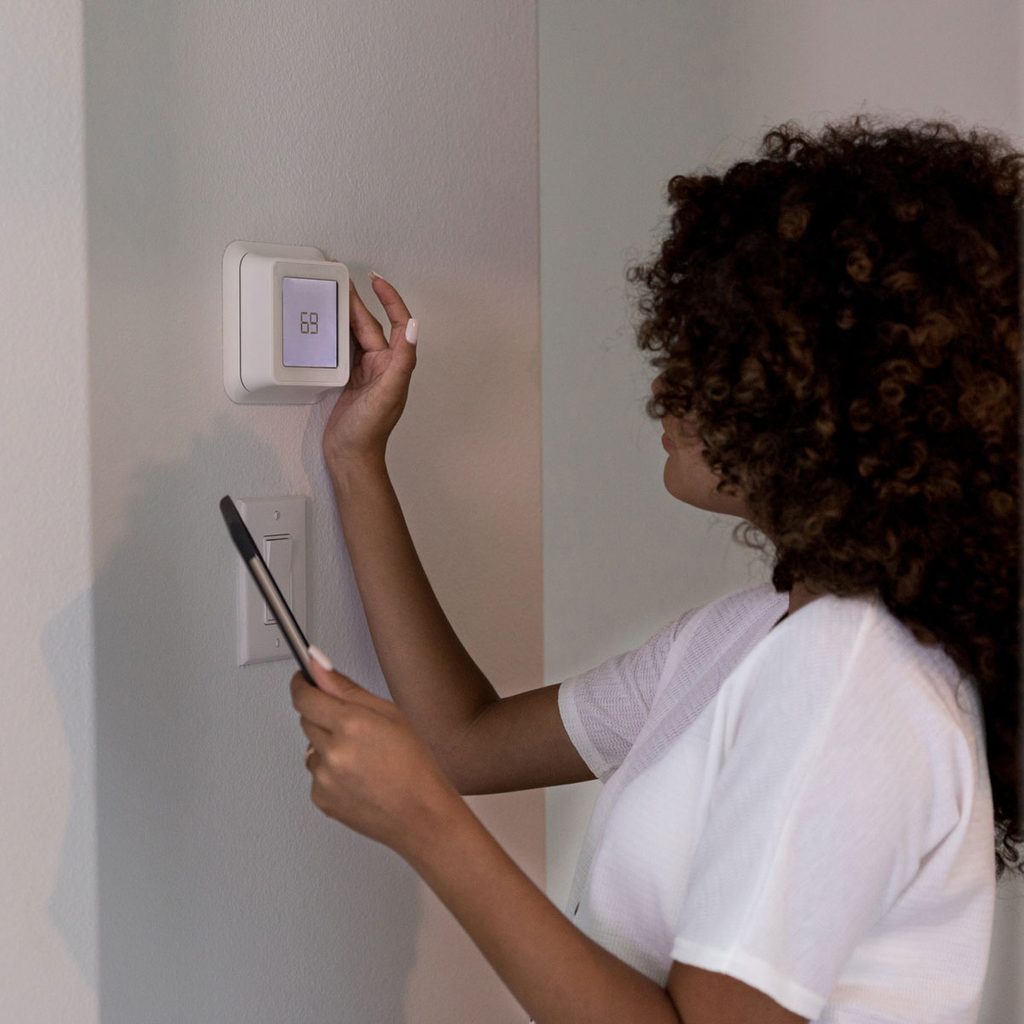What to Know About Movement Sensor Air Conditioning Technology
Updated: Sep. 18, 2023

In the world of home heating and air conditioning, movement sensor technology and smart thermostats offer more options for keeping your family cool.
For homeowners interested in minimizing their heating, ventilation and air conditioning (HVAC) usage to reduce utility bills and their carbon footprint, movement sensor air conditioning is an attractive option. Here’s a quick recap of what movement sensor air conditioning is, how it works, and whether it’s right for you!
On This Page
What Is Movement Sensor Air Conditioning?
Movement sensor air conditioning uses electronic tracking to determine the number and location of occupants in a building and adjusts the thermostat accordingly. It’s been popular in commercial buildings for some time because the 9-to-5 workday makes its application a little simpler. But in recent years this technology has begun to appear in residential settings as well.
How Does Movement Sensor Air Conditioning Work?
The popularity of mini-split air conditioning systems in the home has allowed movement sensor systems to gain traction. When combined with a mini-split, motion sensors allow the HVAC system to adjust the temperature of specific zones, even to individual rooms. This means the living room may be cooler when the family gathers to watch TV, but less cooled when everyone moves to a different part of the house.
A movement sensor air conditioning system can be as simple as tying a standard HVAC system to a movement sensor and an on/off switch. More recent systems use a combination of smart thermostats and sensors to create an uninterrupted experience. For example, you probably don’t want the air conditioning to turn off at night, even though motion will be minimal when everyone is asleep. This was an issue in some hotels when they first started implementing motion sensors, with some guests even resorting to using Mylar balloons to trick air conditioning systems into continuing to run overnight!
Cost and Installation
Bundled kits with smart thermostats and motion sensors are available from many manufacturers and retailers. Prices vary depending on the features and number of sensors you need, but you can buy a basic package for less than $300. This kit from Honeywell is a good example. You can also add additional sensors as needed, during the initial installation or at a later date.
(Don’t assume that all packages that have “smart room sensors” are movement activated. Some remote devices track temperature, not occupancy. Be sure to verify before you order!)
Installing a smart thermostat and motion sensors isn’t complicated, as most sensors are wireless. But if you’re switching to a new air conditioning system, that’s a task best left to a licensed pro.
Factors to Consider When Installing
The type of motion sensor air conditioning that’s best for you will depend on your home’s layout and your family’s usage. If family members often move from one room to another, be sure to find a system that allows custom timing to prevent overly frequent triggering. You may find that a simple override feature makes life much easier than trying to adjust the system on the fly.
You may also want to see if the manufacturer provides an app that allows your smartphone to tell the thermostat to precool the house in time for your return home.
And finally, you may want to consider if your home is a good fit for a mini-split system, as the combination of these two technologies really shines.